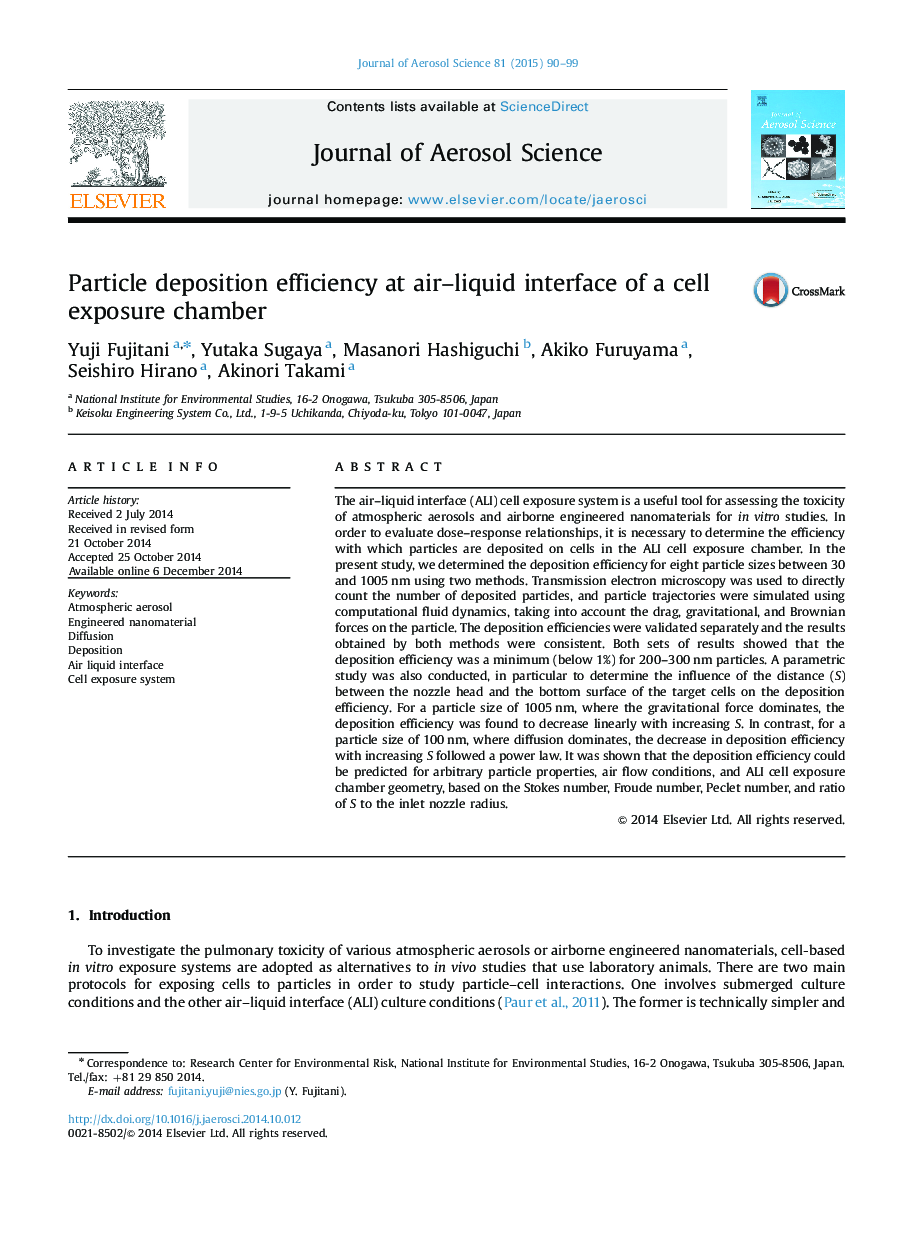| Article ID | Journal | Published Year | Pages | File Type |
|---|---|---|---|---|
| 4452275 | Journal of Aerosol Science | 2015 | 10 Pages |
•Deposition efficiencies in the air–liquid interface cell exposure system was studied.•Deposition efficiencies were minimum for 200–300 nm particles.•Longer distance between the nozzle head and the bottom leads to lower efficiencies.•The ratio of the distance to the nozzle radius is important factor in the efficiency.
The air–liquid interface (ALI) cell exposure system is a useful tool for assessing the toxicity of atmospheric aerosols and airborne engineered nanomaterials for in vitro studies. In order to evaluate dose–response relationships, it is necessary to determine the efficiency with which particles are deposited on cells in the ALI cell exposure chamber. In the present study, we determined the deposition efficiency for eight particle sizes between 30 and 1005 nm using two methods. Transmission electron microscopy was used to directly count the number of deposited particles, and particle trajectories were simulated using computational fluid dynamics, taking into account the drag, gravitational, and Brownian forces on the particle. The deposition efficiencies were validated separately and the results obtained by both methods were consistent. Both sets of results showed that the deposition efficiency was a minimum (below 1%) for 200–300 nm particles. A parametric study was also conducted, in particular to determine the influence of the distance (S) between the nozzle head and the bottom surface of the target cells on the deposition efficiency. For a particle size of 1005 nm, where the gravitational force dominates, the deposition efficiency was found to decrease linearly with increasing S. In contrast, for a particle size of 100 nm, where diffusion dominates, the decrease in deposition efficiency with increasing S followed a power law. It was shown that the deposition efficiency could be predicted for arbitrary particle properties, air flow conditions, and ALI cell exposure chamber geometry, based on the Stokes number, Froude number, Peclet number, and ratio of S to the inlet nozzle radius.
